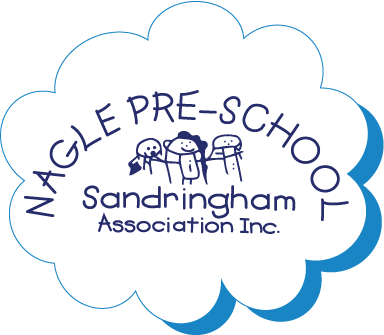
Commitment to Child Safety
Child Safe Standards
Commitment to Child Safety Statement
Nagle Pre-School is committed to the safety and wellbeing of all children.
This will be the primary focus of our care and decision-making.
Nagle Pre-School is committed to providing a child safe environment where children are safe and feel safe, and their voices are heard about decisions that affect their lives. Particular attention will be paid to the cultural safety of Aboriginal children and children from culturally and/or linguistically diverse backgrounds, as well as the safety of children with a disability.
Every person involved in Nagle Pre-School has a responsibility to understand the important and specific role they play individually and collectively to ensure that the wellbeing and safety of all children is at the forefront of all they do and every decision they make.
To support this responsibility and commitment to Child Safe Standards and associated policies, Nagle Pre-School requires all parent/guardian volunteers to hold a current Working With Children (WWC) check and list Nagle as an organisation they are involved in prior to commencing volunteer duties (which includes parent Stay and Play and excursions). Parents/guardians will also be asked to read and acknowledge in writing Nagle’s Code of Conduct upon enrolment of their child.
Acknowledgement of our Code of Conduct will be also required for all other adult visitors, as well as documentation of their WCC check details before entering the kinder.
More information for parent and carers about Child Safe Standards
Child Safe Standards
The Child Safe Standards promote the safety of children, prevent child abuse, and ensure organisations have effective processes in place to respond to and report all allegations of child abuse.
The Child Safe Standards commenced in Victoria in January 2016, with the new Child Safe Standards coming into force on 1 July 2022.
The Standards are a set of mandatory requirements to protect children and young people from harm and abuse, and require organisations involving children to have policies, procedures and practices to keep them safe.
Nagle Pre-School is committed to continuous improvement against these Standards:
Standard 1 Organisations establish a culturally safe environment in which the diverse and unique identities and experiences of Aboriginal children and young people are respected and valued.
Click here for details about Child Safe Standard 1
Standard 2 Child safety and wellbeing is embedded in organisational leadership, governance and culture.
Click here for details about Child Safe Standard 2
Standard 3 Children and young people are empowered about their rights, participate in decisions affecting them and are taken seriously.
Click here for details about Child Safe Standard 3
Standard 4 Families and communities are informed and involved in promoting child safety and wellbeing.
Click here for details about Child Safe Standard 4
Standard 5 Equity is upheld and diverse needs respected in policy and practice.
Click here for details about Child Safe Standard 5
Standard 6 People working with children and young people are suitable and supported to reflect child safety and wellbeing values in practice.
Click here for details about Child Safe Standard 6
Standard 7 Processes for complaints and concerns are child-focused.
Click here for details about Child Safe Standard 7
Standard 8 Staff and volunteers are equipped with the knowledge, skills and awareness to keep children and young people safe through ongoing education and training.
Click here for details about Child Safe Standard 8
Standard 9 Physical and online environments promote safety and wellbeing while minimising the opportunity for children and young people to be harmed.
Click here for details about Child Safe Standard 9
Standard 10 Implementation of the Child Safe Standards is regularly reviewed and improved.
Click here for details about Child Safe Standard 10
Standard 11 Policies and procedures document how the organisation is safe for children and young people.

